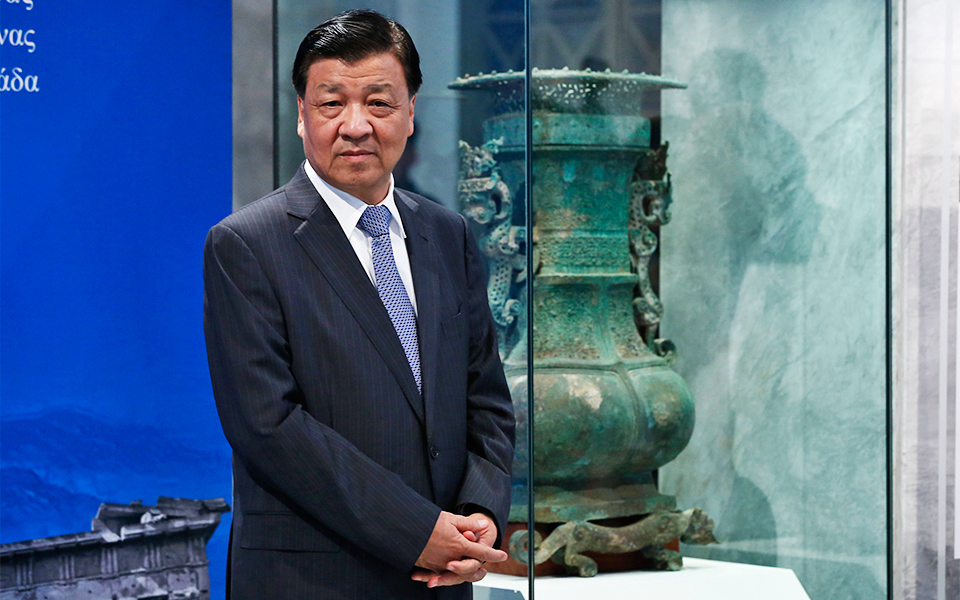An ancient Chinese bronze hu (amphora) with a coiled dragon design, made more than 2,500 years ago, is now on display at the Hall of the Altar in the Greek National Archaeological Museum.
Unearthed in 1923 in Xinzheng, in the Henan province, Central China, the antiquity belongs to the Palace Museum in Beijing and has been loaned to the Athens museum for three months on the occasion of its 150th anniversary.
The unique exhibit was unveiled by Liu Yunshan, a member of the Politburo Standing Committee, and Greek Parliament Speaker Nikos Voutsis during a ceremony earlier this month.
Liu was in Greece on a three-day official visit at the invitation of the Greek government. He attended the “China-Europe Civilization Dialogue” event which took place at the museum.

The hu was used as a wine vessel during the Chinese Spring and Autumn Period (770-476 BC) of the Zhou Dynasty.
It is masterfully decorated with exquisite and detailed designs while featuring a long neck and a round-bottomed body.
On the top of the rectangular lid sits a disc-shaped handle with an openwork coiled dragon design.
The neck is decorated with a banana leaf pattern.
“Exhibiting this Chinese national treasure in Greece is part of the exchange and cooperation on cultural artifacts between our two countries.
“There are lots of opportunities for exhibiting our collections at museums around the world,” said Shan Jixiang, director of Beijing’s Palace Museum, adding that in the future, more collections might come to Greece on loan.
China and Greece have signed cooperation agreements for the exchange and protection of their cultural heritage.











